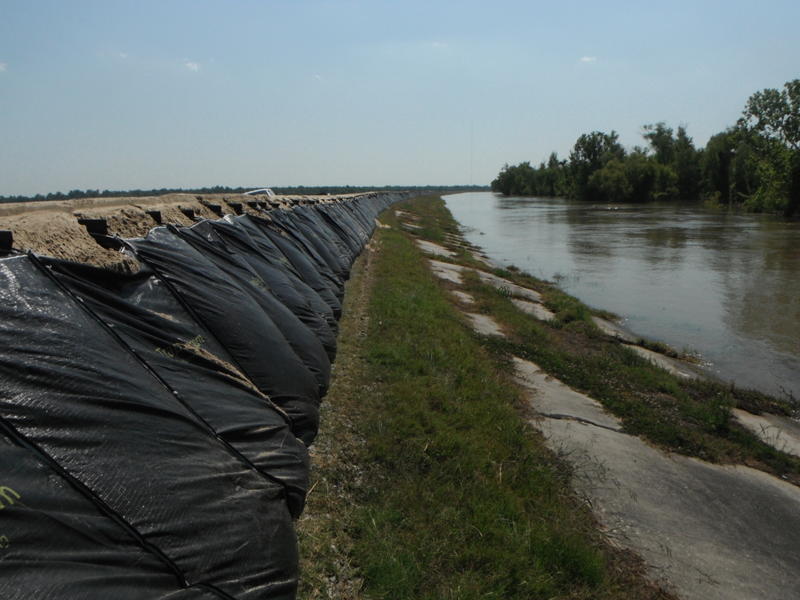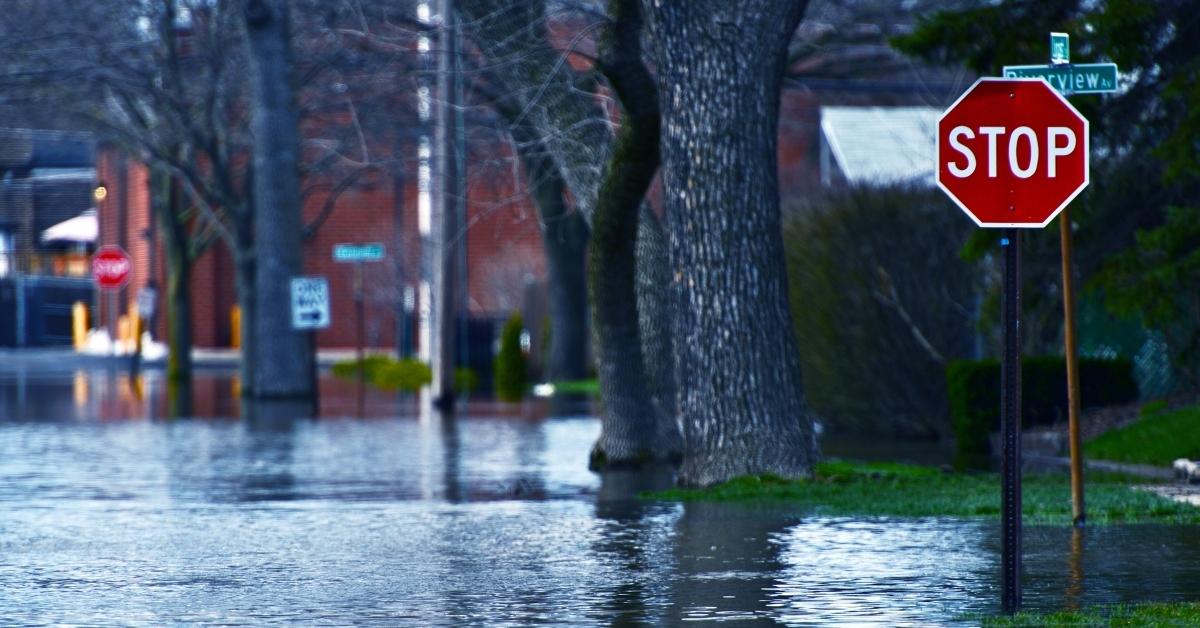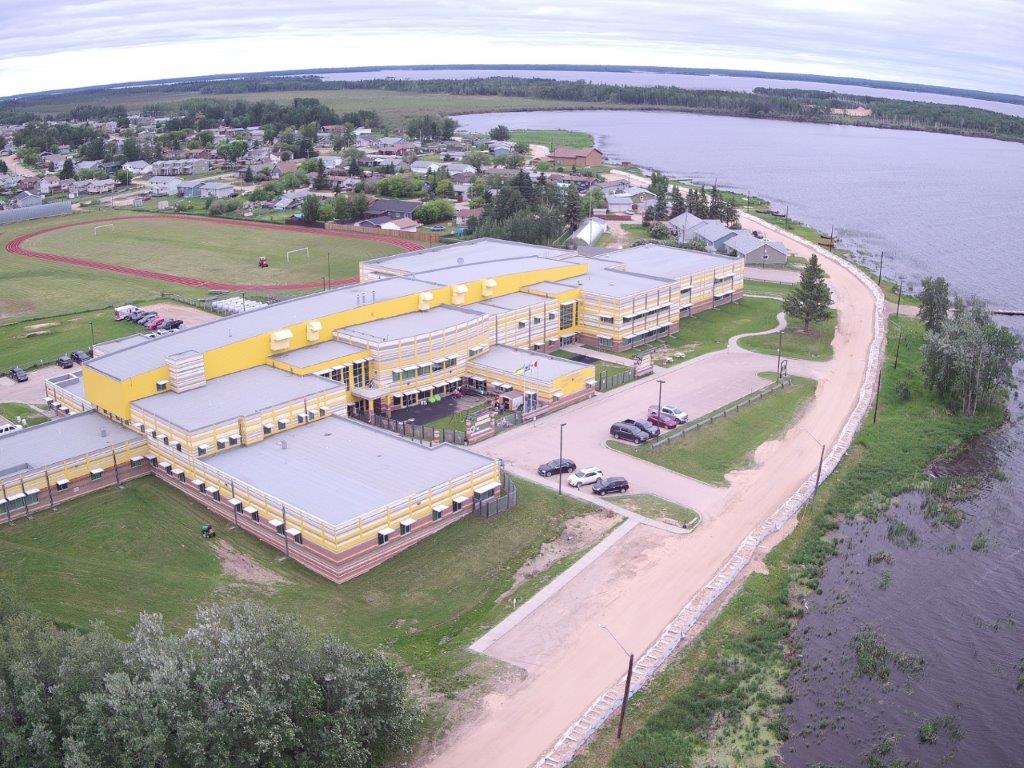New Orleans Flooding: Prevention and Protection Options for Homeowners
New Orleans is always at risk of flooding. While the city has taken measures to prevent flooding, there are options homeowners in Louisiana can take as well.

Even the newest residents in New Orleans are familiar with the city’s reputation for flooding. It’s a problem that city and neighborhood officials, among others, have been wrestling with for centuries.
However, flood protection options for homeowners in New Orleans do exist. Let’s examine why the Big Easy and its suburbs are at such a high risk of flooding, and what homeowners can do to prevent an emergency from becoming a disaster.
Why Is New Orleans at Risk of Flooding?
Multiple factors contribute to why New Orleans has such a high risk of flooding, making it easy for one of these issues to create a domino effect for the others.
1. New Orleans Is Below Sea Level
Much of New Orleans, its surrounding suburbs, and towns on the Mississippi River Delta were built below sea level. Sandwiched beneath the Mississippi River to the south and Lake Pontchartrain to the north, most of the city is situated in a bowl-like valley between the two bodies of water.
While this geographical situation is great for any barges or cruise ships trying to navigate the river, the picture gets far less rosy during bouts of rainy weather. Although the city’s flood walls and levees along Lake Pontchartrain and the Mississippi River are able to keep water away from the city streets and historic buildings under normal conditions, the barriers’ durability is often put to the test during particularly severe weather.
2. Hurricanes Pose Risks in New Orleans
The Gulf of Mexico is a breeding ground for some of the most severe hurricanes and tropical storms in the western hemisphere. Given its location right along the shores of the gulf, New Orleans is particularly vulnerable to hurricanes.
The city also has a notorious history of falling victim to strong hurricanes, even since its days as a French and Spanish colony. The city’s fragile infrastructure took multiple hits during the 18th century, being destroyed during several major storms.
In more recent years, such was the case during the deadly events of Hurricane Katrina. As a Category 5 storm, Katrina hit New Orleans in late August 2005. The storm killed at least 1,392 people, according to official estimates, and destroyed hundreds of homes and buildings where residents were taking shelter. All told, the property damage exceeded $97 billion, making it among the costliest disasters in U.S. history.
However, the risk is always present—the city has been hit with multiple hurricanes and tropical storms in the years since then.
3. New Orleans’ Climate Brings Heavy Rains
In addition to being a prime target for hurricanes and tropical storms, another common cause of flooding in New Orleans is the city’s climate as a whole. Its subtropical climate makes the summers hot and humid, and its presence along the Gulf also contributes to thunderstorms.
These storms can happen throughout the year, but they’re most frequent in the summer. They also tend to come and pass very quickly, bringing torrential rain with them.
One day of storms for a few hours won’t typically cause too many issues for the city’s flood protection systems. On the other hand, if it storms for a few hours every day for a few weeks, residents might begin to notice the rivers, creeks, and the city’s stormwater runoff system working overtime.
4. Dams and Levees Have Failed in the Past
When they were built decades ago, the levees and dams retaining Lake Pontchartrain weren’t designed to last forever—in fact, prior to Katrina, the levee system wasn’t even fully complete according to an Army Corps of Engineers report. Dozens of breaches along the city’s levee system occurred as a result of the storm surge and other factors, some of which were over a quarter of a mile long and directly led to multiple resident fatalities.
While the levees have since been completed and fortified enough to withstand a direct hit from Hurricane Ida in 2021, multiple suburbs still flooded. This indicates that the need for flood protection and prevention still exists, even with the levees in place.
New Orleans Flood Protection Tips
New Orleans emergency management officials, homeowners associations, and even local residents can take steps to prevent the worst-case scenario from coming to pass. These flood prevention tips are valuable for anyone who owns or manages property in the city.
Know Your Flood Zones in New Orleans

As with the rest of the country’s major waterways, the Federal Emergency Management Administration (FEMA) and LSU AgCenter have a detailed flood zone map of New Orleans. While the primary purpose of these maps is to help home buyers and renters see if they need to purchase flood insurance, they’re also helpful tools for seeing which areas have the greatest risk of flooding during rainy periods or hurricanes.
Those who use FEMA’s flood map of New Orleans may notice a few concerning details:
- The risk of flooding extends beyond the areas around Lake Pontchartrain and the city’s rivers and canals.
- Entire neighborhoods, such as Broadmoor and Lakewood Country Club Estates, are at risk, even though they’re removed from above-ground canals or exposure to the riverfront.
- While levees and spillways can prevent or mitigate river flooding, they won’t necessarily prevent street flooding during periods of heavy rain.
The probability of flooding on these maps follows the factor of base flood elevation (BFE) versus actual elevation. Once you’ve identified what these two factors are on the flood zone map, you can protect your home from flooding.
Install Interior Flood Protection Infrastructure
Most homes and properties in New Orleans and the surrounding suburbs don’t have basements or cellars due to the city being below sea level, meaning that most homes will have their utility equipment installed on the ground floor. That means raising this and other equipment above the BFE level will be essential to keeping the emergency from being even worse.
Ideally, this equipment will also be kept in a waterproof interior room. However, if such a setup isn’t feasible, simply keeping utility equipment away from the floor or on an upper level of the house can also make a difference.
Some homeowners have also found it helpful to install check valves on sump pumps and other equipment.
The BFE value can vary depending on your neighborhood and the general ground elevation, so keep that in mind when installing your water heater, air conditioner, computer equipment, and any backup generators ahead of an approaching storm. Since all of these utilities run on electricity, elevating them could save your life if you need to turn them on or off during a flood in your home.
Make Your Own Flood Prevention Infrastructure
Homemade sandbag levees, dikes, and dams are a common sight on the streets ahead of hurricanes or tropical storms in New Orleans. However, TrapBag® offers an alternative to traditional sandbags that’s designed to withstand major flooding as a watertight barrier.
Here are just a few projects where organizations and homeowners have counted on TrapBag:
- Dams and temporary dams
- Levees and other embankments
- Dikes
- Cofferdams
- Stormwater detention ponds
- Seawalls
- Erosion control barriers
TrapBag barriers are versatile and can be used for almost any project, from flood protection to mining operations, making it an excellent choice for New Orleans residents trying to protect their homes and neighborhoods.
Having the materials for these flood protection measures in New Orleans is critical, whether you’re trying to keep water in or out. Luckily, TrapBag can be delivered and assembled quickly, offering greater peace of mind before the storm starts.
Use TrapBag for New Orleans Flood Protection

While New Orleans is still at risk of flooding without the robust flood prevention infrastructure currently in place, TrapBag is a protection measure that can be used on a smaller scale.
Some additional features homeowners should know about TrapBag:
- TrapBag barriers can be either two or four feet tall.
- They come in 50-foot sections.
- If one cell in the barrier is compromised for any reason, the others will remain standing.
- TrapBags are stackable, so they can create a watertight barrier up to eight feet high.
- Installment requires 40% less sand or other filler material than traditional sandbags.
- If needed, one individual can set up a TrapBag barrier on their own, without requiring a whole crew to get the job done.
Not only does this mean a lower likelihood of property damage, but it also shows TrapBag has lower associated setup and labor costs—meaning it’s an ideal alternative to traditional sandbags, which require more material and more people to set up a proper barrier.
Plan Your New Orleans Flood Protection Strategy Today
Prevention is less expensive than cleanup. That’s a lesson that residents in the Big Easy have learned the hard way multiple times. TrapBag is an essential tool for flood prevention around homes and neighborhoods, however, making it easier for emergency management officials to protect their residents, homes, and businesses when disaster is about to strike.
To learn more about what TrapBag can do to protect your property in New Orleans, contact us for more information today.
